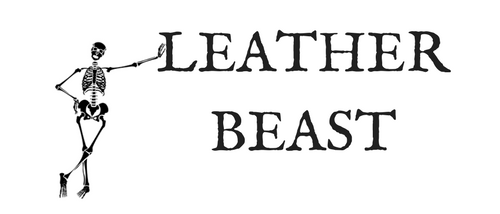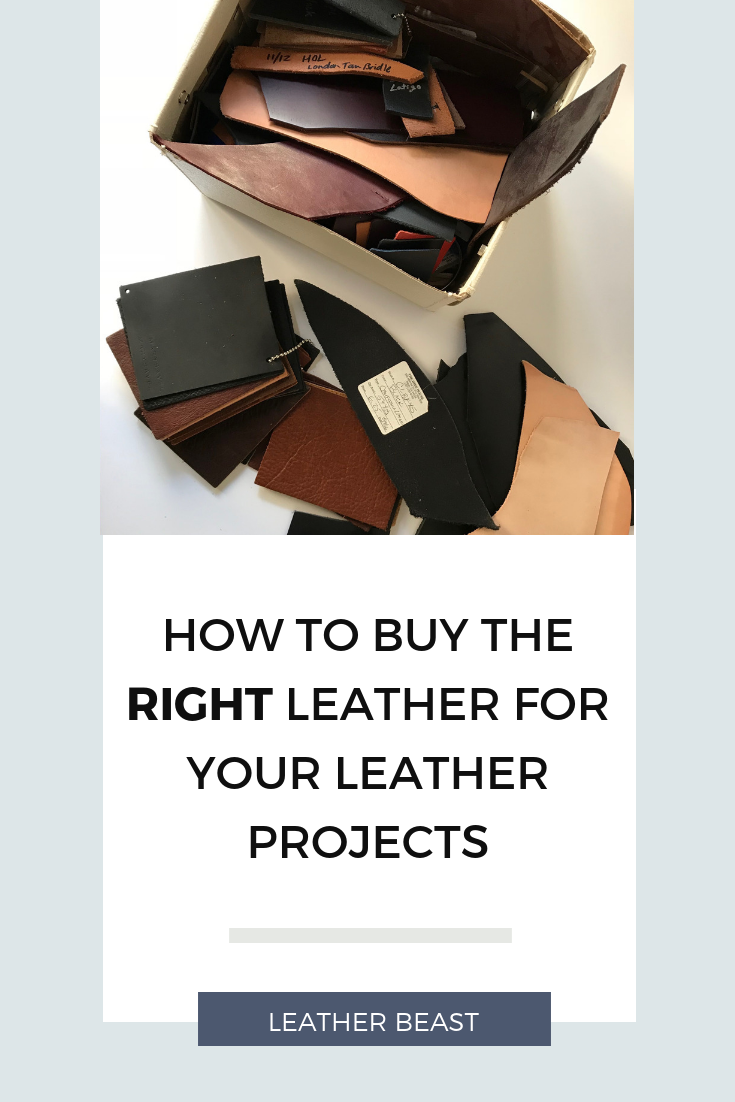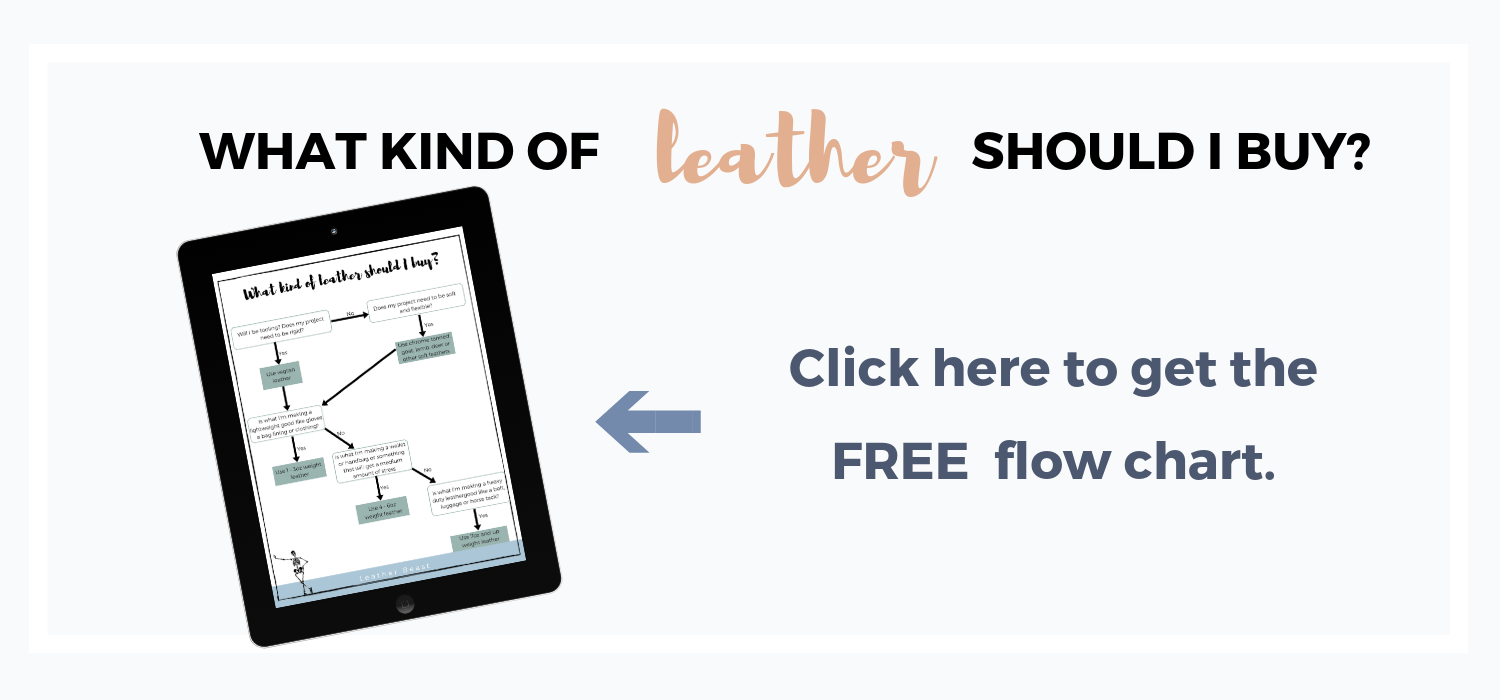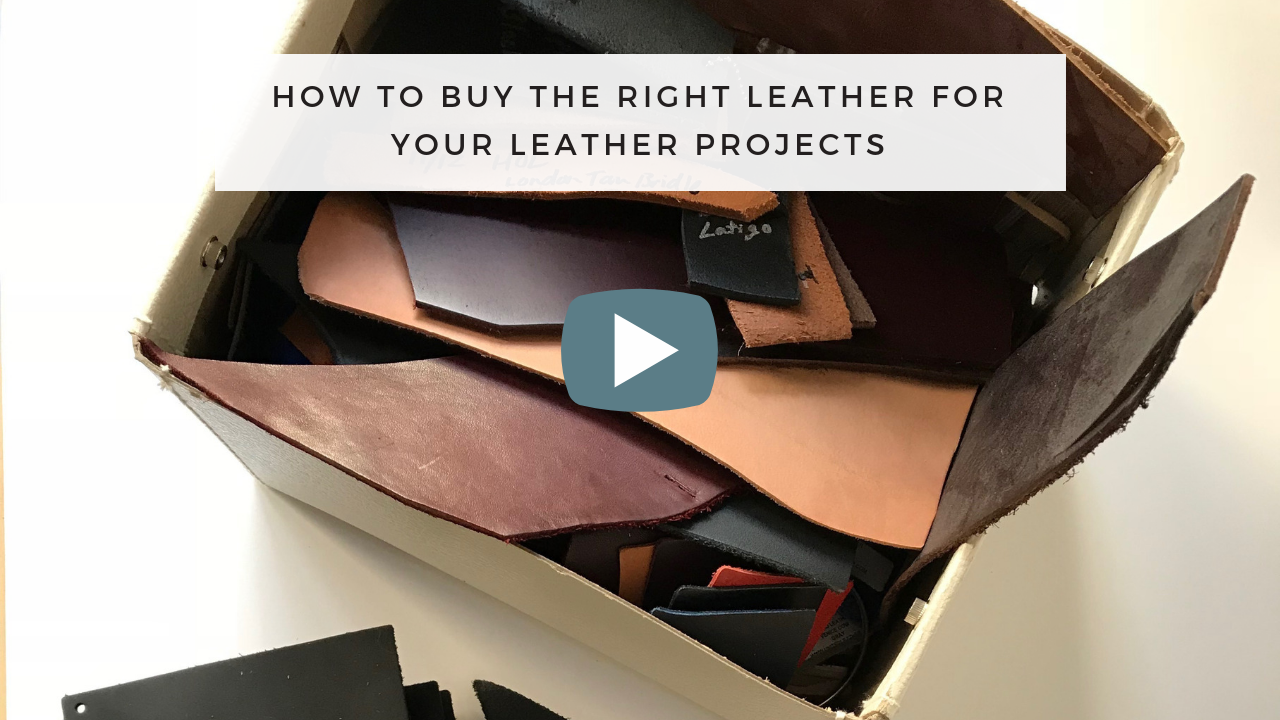How to Buy the Right Leather for Your Leather Projects
So you know when you go to the grocery store and you’re like, “ok I need to make dinner tonight what am I going to make?”
If you’re making spaghetti and meatballs you know you need some beef, some pasta and tomatoes. You know the exact ingredients that you need to get in order to make this meal a success, right?
You’re not just walking in to the grocery store and randomly grabbing ingredients and then getting home and saying, “ok, now i’m going to make this fish and oranges into spaghetti and meatballls”.
Well the same goes for when you’re buying leather.
The first step to buying the right leather hide for your leather project is to make sure you know what exactly you’re going to be making before you purchase the leather. This way you’ll get the correct ingredient and materials upfront.
I know exactly how confusing that first leather purchase can be when you're a newbe. Heck, it still can be confusing for me, 7 years later as new leathers pop up and new ways to market them and new names to call them by!
There are so many different types of leather and different ways of describing leather.
So navigating these leather seas can be overwhelming to say the least.
What kind of leather should I buy?
So how do you know what kind of leather to buy? There are a few different things that I think about when purchasing leather.
1 | The tannage: Chrome tanned vs. veg tanned leather
This is a great place to start. 80% of the world’s leather can be described as chrome tanned, the rest is vegetable tanned, brain tanned or other types of tanning.
Chrome tanned leather is leather that is tanned using chromium salts. The chrome tanning process is a lot quicker and easier to produce which means the leather is usually cheaper. Vegetable tanned leather is leather that is tanned using organic materials like tree bark and leaves and slower methods. Vegetable tanned leather in its natural state can range from a pinky beige color to a natural tan color.
I prefer to use vegetable tanned leather because I like it’s durability, it’s stiffness and the way it patina’s and changes over time. Chrome tanned leather does not change and patina over time.
2 | The grain: Top grain vs. Full grain leather
Full grain leather is the highest grade leather and is leather that has had the hair removed but other then that the surface has not been corrected or altered in anyway.
Top grain is the 2nd highest grade leather. And it is leather that has been split in thickness. So it is a thinner more pliable leather that is still very strong and durable. Most of your higher end leathers are going to be top grain.
Corrected grain leather refers to leather that has had the top surface buffed in order to remove scars from insect bites or scratches.
In general steer clear of anything called bonded leather, split leather or anything that claims to be “genuine” leather. These are really cheap leathers that are not durable or quality leather.
3 | The thickness: The weight of the leather
In the states, we measure our leather thickness by ounces. This took me a little while to get used to at first and to really understand the difference between a 2oz and a 10oz leather.
The smaller the oz the thinner the leather. The bigger the oz the thicker the leather. For example a 2 oz leather is thinner than a 10 oz leather and a 2oz leather would be good for something like gloves or a bag lining. For belts, makers use anywhere from a 7oz leather up to a 10oz leather or higher.
For my handbags, I like a 4/5 oz leather. It’s thick enough to keep it’s shape, but not so thick that it’s hard to stitch through.
4 | The hand: The firmness or softness of the leather
The hand just refers how to soft or firm the leather is to the touch or to the hand. Vegetable tanned leather has a fuller body and firmer feel to it than chrome tanned and oil tanned leather.
Chrome tanned leather has a softer hand and it’s more pliable. This comes in handy if you’re working on a project where the stitching is on the inside. You’ll be able to turn it right side out after stitching much easier then you would if you were using vegetable tanned leather.
I have a created a flowchart buying guide to help you decide what kind of leather you should buy. You can download that guide here.
So now you know what to think about when you’re buying leather. First and foremost make sure you know what project you’ll be making, this will help to guide your buying choices. Once you know what you’re making then you can determine what type, grain, weight and what kind of hand your leather should have to best suite your project.



